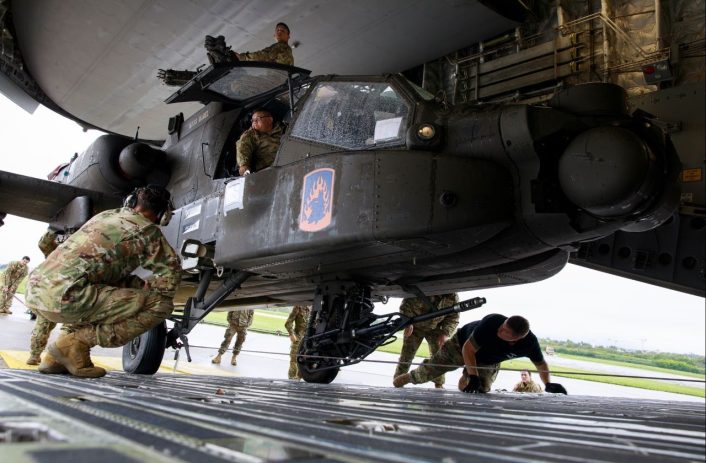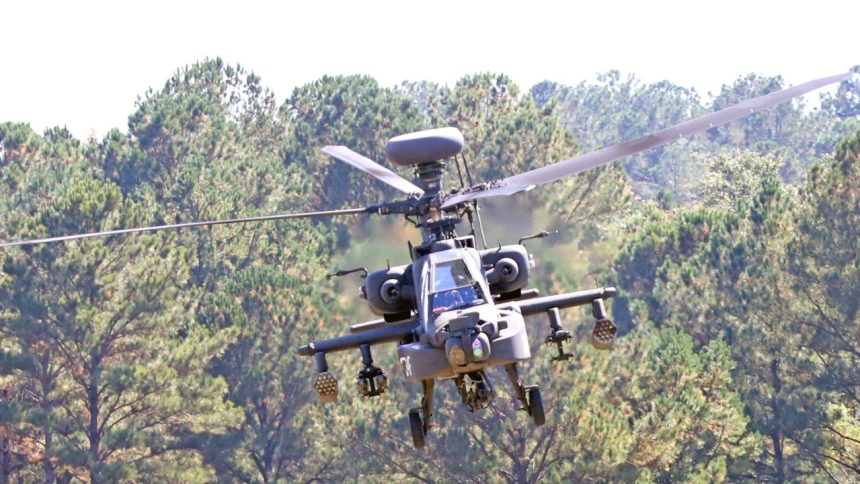As armored and ‘maneuver warfare’ emerges in Europe, the one weapon that can pin down enemy steel and infantry, which Ukraine lacks in large numbers, Russia has and the US is fervently potentiating, is the attack helicopter.
The stunning Ukrainian incursion into Kursk finally marks the dawn of Western ‘maneuver warfare’ on the front. Fast moving mechanized formations assaulted the frontline ‘screens’, driving deep into the enemy rear, exploiting the lack of Russian defensive preparedness there. But as Western think-tanks like the ISW (Institute for the Study of War) suggest, it is important to capitalize on the “operational surprise,” “restore” maneuver warfare and address the “problems” with “permanent positional warfare.”
However, it is difficult to imagine Ukraine completely overturning the Russian advances and taking back the seized territory. As Western reports themselves note, the Kursk offensive merely hands Ukraine “a potential bargaining chip to be used in negotiations.”
Thus, modern armored warfare is again becoming a reality in the European theater. Armor-on-armor contacts have been recorded between Russian and Ukrainian tanks. But the one weapon system that can offer a decisive advantage in pinning down enemy steel and infantry, which Ukraine lacks in large numbers, Russia has and the US is fervently potentiating, is the attack helicopter.
US Army featuring the Apache in the European theater
Nearly a month prior to the Ukrainian offensive, the U.S. Army showed its AH-64s participating in training exercises. What Russia did to Ukraine’s Leopard tanks and Bradley IFVs with its Kamov Ka-52s with their Vikhr ATGMs (Anti-Tank Guided Missiles) during Kyiv’s counteroffensive in the summer of 2023, the Apaches might do to Russian armor with AGM-114 Hellfire missiles.
Calling them the U.S. Army’s new “tank hunters in Europe,” the video said the Apache is “part scout, part flying tank,” who’s job “is to fly low and fast, sneak behind enemy lines and use a combination of advanced sensors and bruising firepower to foil attacks before they happen.” These Apaches could possibly be from the 12th Combat Aviation Brigade, based at the Wiesbaden Army Airfield at Clay Kaserne in Germany.
The U.S. Army’s video also comes at a time NATO military leaders “found gaps in Europe’s defense” during the alliance’s summit in Washington DC late in July, according to Reuters. The report quoted officials who identified the areas to be addressed as “shortages in air defenses and long-range missiles, troop numbers, ammunition, logistical headaches and a lack of secure digital communications.”
There’s nothing quite like an AH-64 Apache conducting gunnery to get your blood pumping in the morning. #brrrat #brrrat pic.twitter.com/gwY22iU9Tz
— 3rd Combat Aviation Brigade (@3rdCAB) October 4, 2018
Why Ukraine’s 2023 counteroffensive failed?
There are two reasons why Ukraine’s 2023 counteroffensive failed. One is that Russia rapidly built its multi-layered defensive line as it took new territory. Secondly, it had the full-breadth of complementing systems like wheeled and tracked IFVs, tanks, a diverse range of small caliber and long-range guns, rocket artillery and helicopter gunships (Ka-52, Mi-28 and Mi-35).
It would be difficult to transfer all these corresponding systems to Ukraine, given the diplomatic, industrial, logistical and training hurdles that held back other Western systems like the Leopard tanks, ATACMS (Army Tactical Missile System) and the F-16s – that Russia exploited.
Among the things that contributed to the stall of the counteroffensive are the large numbers of attack helicopters in the Russian ranks. These helicopters, armed with ATGMs, were able to strike multiple Ukrainian vehicles while staying out of harm’s way.
On the other hand, Ukraine can count on a number of Mi-24, with some donated by other European countries, but their numbers can’t match the Russian’s. Also, they notably lack ATGMs, as stocks were depleted and thus the Hinds are only seen carrying unguided rockets, which make the helicopters less precise and more vulnerable during the attacks.
Even worse, Ukrainian Mi-24s are also depleting their unguided rockets’ stocks. In fact, it was seen on multiple occasions that the Hinds replaced their UV-32-57 pods and S-5 rockets with the US-made M261 pods and Hydra 70 mm rockets.
Apaches to fight how they were meant
What is fascinating is that with conventional war against a peer rival becoming a reality after fighting non-state actors, the Apaches are poised to perform a role they were designed for – search and destroy tank columns. That was their mission during the Cold War, where the now retired OH-58D Kiowa Warrior would quietly fly ahead and identify Soviet tanks, with the Apaches then releasing volleys of Hellfires to decimate the tank formations.
The U.S. Army’s video shows a few AH-64 Apache helicopters, with their distinctive mast-mounted Longbow millimeter-wave fire control radar, flying over the training ranges in Germany and employing their weapons. But is at the point where the Apaches join a column of M1A2 Abrams MBTs (Main Battle Tanks), which the service reminds the deep bond between armored units and attack helicopters.

On Sep. 1, 2023, the 12th CAB received the first two units of the AH-64E Version 6 helicopters, after being transported from a U.S Air Force C-17 Globemaster III cargo aircraft. The V6 has “multiple enhancements to the aircraft’s sensors, software, and weapons performance, and is designed for interoperability within the multi-domain operational ecosystem.”
But most importantly, the aircraft will allow use of the new AGM-179 JAGM (Joint Air-to-Ground Missile) and future integration of the Spike NLOS (Non-Line of Sight) missile. As The Aviationist had reported, the JAGM is basically the combination of a new dual-mode guidance section fitted onto a AGM-114R Hellfire missile bus, providing precision strike and fire-and-forget capability against multiple targets in adverse weather and obscured battlefield conditions.
“The AH-64E V6 is a lethal, survivable, and agile system providing ground forces with more reach, maneuverability, and performance,” says the U.S. Army.
Helicopter gunships and ‘maneuver warfare’
Should NATO clash with Russia, the Apaches could supplement armored assaults into certain key sectors where reconnaissance and surveillance assess the presence of some gaps. Hitting tanks or fortified battlefield command and control centers, Western tanks and mechanized infantry could make synchronized strikes to punch holes in Russian forward lines.
The objective could be geographical – create pressure in certain sectors and force Russian commanders to divert resources. While tactics might have changed since the Cold War, one thing would still be the same: the synergy between ground forces and attack helicopters, together with the air superiority above the frontlines, to allow freedom of maneuver on the ground.
Having said that, Ukraine’s ‘maneuver warfare’ is incomplete without helicopter gunships. And the West is ‘maneuvering’ to learn from both their offensive campaigns, studying the lessons learned in Ukraine to better prepare for possible conflicts against peer adversaries.









